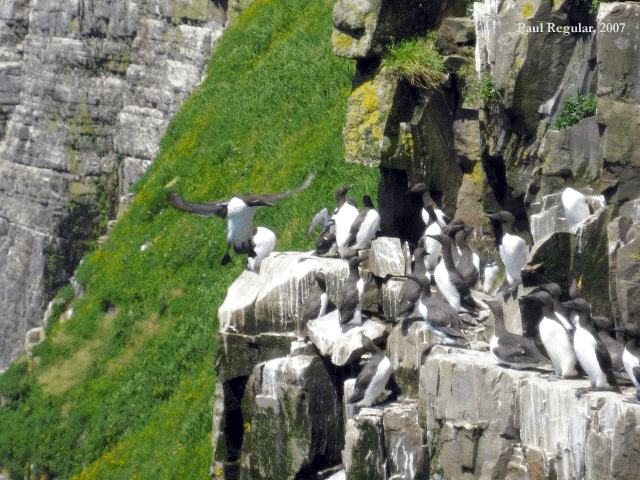Common Murre

Family: Alcidae
Scientific Name: Uria aalge
Description: The body has sooty brown upper parts with white under parts. They have small wings and short tails which do not make them good fliers. Common murres need to use feet as rudders for flying. Their bill is slender and black. Total length is around 41-44cm.
Distribution: Numerous on the east and west coasts of Canada.
Habitat: They nest in dense colonies on rocky cliffs and forage in Open Ocean.
Nesting: Lays one variably marked coloured egg on bare rock surfaces near water. Eggs are incubated by parents for 28-37 days.
Diet: Dives for fish, squid, marine worms and crustaceans.
Relation to man: Common Murres are often hunted by humans for food. These birds can accidentally die in the inshore fishery tangled up in nets or in accidental oil spills. Many of the most important murre colonies are now included in federal or provincial wildlife sanctuaries, but others still await such protection.
Interesting facts: They are excellent divers and swimmers and can go as deep as 100m. Between Aug. and Oct. adults loose their wing feathers and are completely flightless for several weeks—during this time they swim long distances to autumn feeding grounds.
Images
 |
 |
 |
|
Back |